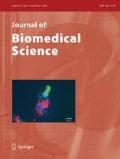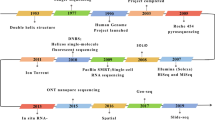Abstract
Microarray-based comparative genomic hybridization (array-CGH) is a technique by which variations in copy numbers between two genomes can be analyzed using DNA microarrays. Array CGH has been used to survey chromosomal amplifications and deletions in fetal aneuploidies or cancer tissues. Herein we report a user-friendly, MATLAB-based, array CGH analyzing program, Chang Gung comparative genomic hybridization (CGcgh), as a standalone PC version. The analyzed chromosomal data are displayed in a graphic interface, and CGcgh allows users to launch a corresponding G-banding ideogram. The abnormal DNA copy numbers (gains and losses) can be identified automatically using a user defined window size (default value is 50 probes) and sequential student t-tests with sliding windows along with chromosomes. CGcgh has been tested in multiple karyotype-confirmed human samples, including five published cases and trisomies 13, 18, 21 and X from our laboratories, and 18 cases of which microarray data are available publicly. CGcgh can be used to detect the copy number changes in small genomic regions, which are commonly encountered by clinical geneticists. CGcgh works well for the data from cDNA microarray, spotted oligonucleotide microarrays, and Affymetrix Human Mapping Arrays (10K, 100K, 500K Array Sets). The program can be freely downloaded from http://www.mcu.edu.tw/department/biotec/en%5Fpage/CGcgh/.






Similar content being viewed by others
References
Carr DH (1975) Cytogenetics and the pathologist. Pathol Annu 10:93–144
Kallioniemi A, Kallioniemi OP, Sudar D, Rutovitz D, Gray JW, Waldman F, Pinkel D (1992) Comparative genomic hybridization for molecular cytogenetic analysis of solid tumors. Science 258:818–821
Solinas-Toldo S, Lampel S, Stilgenbauer S, Nickolenko J, Benner A, Dohner H, Cremer T, Lichter P (1997) Matrix-based comparative genomic hybridization: biochips to screen for genomic imbalances. Genes Chromosomes Cancer 20:399–407
Pollack JR, Perou CM, Alizadeh AA, Eisen MB, Pergamenschikov A, Williams CF, Jeffrey SS, Botstein D, Brown PO (1999) Genome-wide analysis of DNA copy-number changes using cDNA microarrays. Nat Genet 23:41–46
Salman M, Jhanwar SC, Ostrer H (2004) Will the new cytogenetics replace the old cytogenetics? Clin Genet 66:265–275
Mantripragada KK, Buckley PG, de Stahl TD, Dumanski JP (2004) Genomic microarrays in the spotlight. Trends Genet 20:87–94
Pollack JR, Sorlie T, Perou CM, Rees CA, Jeffrey SS, Lonning PE, Tibshirani R, Botstein D, Borresen-Dale AL, Brown PO (2002) Microarray analysis reveals a major direct role of DNA copy number alteration in the transcriptional program of human breast tumors. Proc Natl Acad Sci USA 99:12963–12968. Epub 12002 Sep 12924
Heiskanen MA, Bittner ML, Chen Y, Khan J, Adler KE, Trent JM, Meltzer PS (2000) Detection of gene amplification by genomic hybridization to cDNA microarrays. Cancer Res 60:799–802
Albertson DG, Pinkel D (2003) Genomic microarrays in human genetic disease and cancer. Hum Mol Genet 12(Spec No 2):R145–R152
Myers CL, Chen X, Troyanskaya OG (2005) Visualization-based discovery and analysis of genomic aberrations in microarray data. BMC Bioinformatics 6:146
Lingjaerde OC, Baumbusch LO, Liestol K, Glad IK, Borresen-Dale AL (2005) CGH-Explorer: a program for analysis of array-CGH data. Bioinformatics 21:821–822
Autio R, Hautaniemi S, Kauraniemi P, Yli-Harja O, Astola J, Wolf M, Kallioniemi A (2003) CGH-Plotter: MATLAB toolbox for CGH-data analysis. Bioinformatics 19:1714–1715
Wang TH, Lee YS, Chen ES, Kong WH, Chen LK, Hsueh DW, Wei ML, Wang HS (2004) Establishment of cDNA microarray analysis at the Genomic Medicine Research Core Laboratory (GMRCL) of Chang Gung Memorial Hospital. Chang Gung Med J 27:243–260
Irizarry RA, Hobbs B, Collin F, Beazer-Barclay YD, Antonellis KJ, Scherf U, Speed TP (2003) Exploration, normalization, and summaries of high density oligonucleotide array probe level data. Biostatistics 4:249–264
Liu WM, Mei R, Di X, Ryder TB, Hubbell E, Dee S, Webster TA, Harrington CA, Ho MH, Baid J, Smeekens SP (2002) Analysis of high density expression microarrays with signed-rank call algorithms. Bioinformatics 18:1593–1599
Chen CP, Wang TH, Lin SP, Chern SR, Chen MR, Lee CC, Chen YJ, Wang W (2006) 24 Mb deletion of 6q22.1 → q23.2 in an infant with pulmonary atresia, ventricular septal defect, microcephaly, developmental delay and facial dysmorphism. Eur J Med Genet 49:516–519
Chao A, Lee YS, Chao AS, Wang TH, Chang SD (2006) Microarray-based comparative genomic hybridization analysis of Wolf-Hirschhorn syndrome in a fetus with deletion of 4p15.3 to 4pter. Birth Defects Res A Clin Mol Teratol 76:739–743
Chen CP, Chern SR, Lin SP, Lin CC, Li YC, Wang TH, Lee CC, Pan CW, Hsieh LJ, Wang W (2005) A paternally derived inverted duplication of distal 14q with a terminal 14q deletion. Am J Med Genet A 139:146–150
Peng HH, Wang TH, Chao AS, Chang YL, Chang SD, Soong YK (2005) Prenatal diagnosis of monosomy 4p14 → pter and trisomy 11q25 → qter: clinical presentations and outcomes. Prenat Diagn 25:1133–1137
Li C, Wong WH (2001) Model-based analysis of oligonucleotide arrays: expression index computation and outlier detection. Proc Natl Acad Sci USA 98:31–36
Barrett T, Troup DB, Wilhite SE, Ledoux P, Rudnev D, Evangelista C, Kim IF, Soboleva A, Tomashevsky M, Edgar R (2007) NCBI GEO: mining tens of millions of expression profiles—database and tools update. Nucleic Acids Res 35:D760–D765
Marshall CR, Noor A, Vincent JB, Lionel AC, Feuk L, Skaug J, Shago M, Moessner R, Pinto D, Ren Y, Thiruvahindrapduram B, Fiebig A, Schreiber S, Friedman J, Ketelaars CE, Vos YJ, Ficicioglu C, Kirkpatrick S, Nicolson R, Sloman L, Summers A, Gibbons CA, Teebi A, Chitayat D, Weksberg R, Thompson A, Vardy C, Crosbie V, Luscombe S, Baatjes R, Zwaigenbaum L, Roberts W, Fernandez B, Szatmari P, Scherer SW (2008) Structural variation of chromosomes in autism spectrum disorder. Am J Hum Genet 82:477–488
Peng HH, Wang TH, Hsueh DW, Chang SD, Soong YK (2005) Prenatal diagnosis of partial trisomy 12q: clinical presentations and outcome. Prenat Diagn 25:470–474
Chen CP, Lin SP, Wang TH, Chen YJ, Chen M, Wang W (2006) Perinatal findings and molecular cytogenetic analyses of de novo interstitial deletion of 9q (9q22.3 → q31.3) associated with Gorlin syndrome. Prenat Diagn 26:725–729
Acknowledgments
We are indebted to Professor S. W. Scherer for sharing their data files (as cited in Ref. 22), which are available for downloading by CGcgh software users. We thank Ding-Wei Hsueh, Chung-Chun Ma and Szu-Yu Tseng for technical assistance, Ji-Yaun Liang (Ming Chuan University) for website maintenance, Dr. Shihtien T. Wang (Children’s Hospital, Medical College of Wisconsin, Milwaukee) for editing the manuscript, and Professor CP Chen (Mackay Memorial Hospital, Taipei, Taiwan) for clinical collaboration. This study was supported by the grants NSC93-3112-B-001-021-Y (to Lee YS and Chen CH) and NSC96-2314-B-182A-068- (to Chao A) from National Science Council of Taiwan, and the grants CMRPG1008-III (to Wang TH) and CMRP1011-III (to Wang HS) from Chang Gung Memorial Hospital.
Author information
Authors and Affiliations
Corresponding author
Additional information
Y. S. Lee and A. Chao contributed equally to this work.
Rights and permissions
About this article
Cite this article
Lee, YS., Chao, A., Chao, AS. et al. CGcgh: a tool for molecular karyotyping using DNA microarray-based comparative genomic hybridization (array-CGH). J Biomed Sci 15, 687–696 (2008). https://doi.org/10.1007/s11373-008-9275-6
Received:
Accepted:
Published:
Issue Date:
DOI: https://doi.org/10.1007/s11373-008-9275-6




